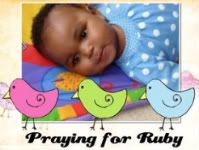Well, I did it: I read almost all of A History of Modern Ethiopia by Bahru Zewde. Upon finishing it, I thought that maybe a second reading would be useful. You know how when something is familiar to you, it's more personally interesting? We'll see. Before any second attempts, however, I'm going to read Adopting the Hurt Child, which was recently suggested as an important read by our social worker.
Back to that first book that I mentioned though. There were so many connections, which, at the moment of making, eased the studying. The most interesting to me was this: An Albanian named Muhammed Ali went to Egypt and established a dynasty that lasted over a century. Part of his plan was to aggrandize his territories, partially by picking away at Ethiopia's western border. Now, this encouraged the formation of groups of "shifta" (bandits) on the Ethiopian side, for defense. One of these "shifta" was Kasa Haylu. Here he gained the experience and resolution to become one of Ethiopia's emperors, Emperor Tewodros. Now, just hang with me: Emperor Tewodros was contantly seeking European, mostly British, aide for his country, but this desire was confused by the sides played out in the Crimean War.
"What?" Let me explain. We began an adoption in Albania, but eventually changed to Ethiopia. AND, I lived in Crimea for two years! Confusion for you, maybe; but, connections for me.
And then, there is Dajjach/Ras Dames Nasibu, who was once governor of Wallega in Ethiopia. He looks uncannily like my dad. I couldn't stop staring at the photo of him. I've tried to find one on-line, to attach, but no such luck.
And finally, for my favorite quote from the book: Dajjach Webe Hayla-Maryam is supposed to have said, regarding two French brothers/scientists, "One collects our plants, another our stones; I do not know what you are looking for, but I do not want it to be in my country that you find it" (Rubenson, Survival, 54).
2.2.09
Subscribe to:
Post Comments (Atom)



No comments:
Post a Comment